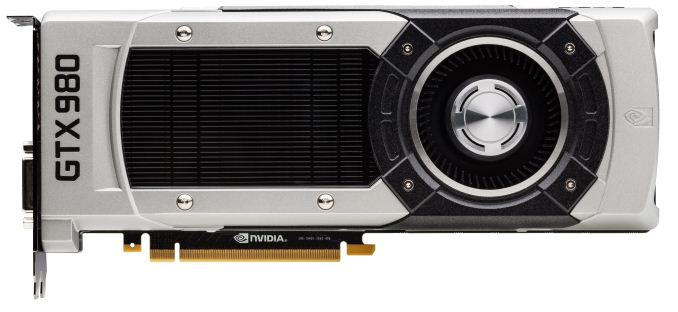AMD Radeon R9 290 Series Prices Finally Begin To Fall
by Ryan Smith on October 7, 2014 12:00 PM EST
With the launch of NVIDIA’s Maxwell-powered GeForce GTX 900 series last month, it was immediately obvious that NVIDIA had been able to deal a swift blow to AMD’s product lineup by surpassing AMD’s performance while significantly undercutting their pricing. At the time we were expecting AMD to quickly respond with the necessary price cuts to keep the R9 290 series competitive with the GTX 900 series, but surprisingly even a week later this had yet to happen.
Now a bit over two and a half weeks after the GTX 900 series launch, we’re finally seeing Radeon R9 290 series pricing fall in response to NVIDIA’s launch. AMD has not announced an official price cut at this time – and admittedly neither AMD nor NVIDIA tend to announce reactive price cuts – so it’s not clear whether this is AMD’s doing, board partner’s, retailers, or most likely all three. But regardless, retail video card prices at Newegg and other etailers have seen some substantial drops that help bring back at least some balance between AMD and NVIDIA’s high end video card lineups.
A number of Radeon R9 290 cards can now be found for around $300 after rebate, with a couple more factory overclocked models at $310. With HIS, Sapphire, PowerColor, Asus, and XFX represented, this is a broad selection of vendors with a bit less than half of Newegg’s stock now at or around $300. Meanwhile R9 290X can be found for $399, again with a wide selection of vendors and roughly half of Newegg’s stock at or near that price. The remainder of Newegg’s stock in turn generally consists of heavily overclocked or otherwise premium cards that carried their own price premium before these latest cuts.
Speaking of AMD card prices, it should also be noted that AMD’s Never Settle Forever bundle is still active even after this round of price cuts. AMD and their partners will be continuing to try to influence the value proposition of their products by including free games.
For AMD these price cuts don’t come a moment too soon, and while they are going to help the competitive landscape I’m not convinced this is the last time we’re going to see AMD cut prices. As we discussed in our review of the GTX 970, comparing stock-to-stock, the $329 GTX 970 is every bit as fast as the now $400 R9 290X. If AMD wants to be price/performance competitive with NVIDIA then there’s still an additional $70 price difference between the two cards, a gap further muddied by AMD’s game bundle and NVIDIA’s superior energy efficiency. Strictly speaking $400 may not be low enough for the R9 290X, but no doubt AMD wants to see what sales are like at $400 before cutting prices on their single-GPU flagship any further.
The R9 290 on the other hand is in an interesting spot. At resolutions below 2160p it trails the GTX 970 by around 10%, but then again at $300 it’s also priced about 10% lower. Since it ships at a lower clockspeed than R9 290X a lot of AMD’s partners also goose the core clock on R9 290, which improves performance a bit but isn’t enough to close that 10% gap. What it does mean however is that at least so long as energy efficiency is not a concern, R9 290 is appropriately priced for its performance. However if energy efficiency is a concern, then AMD doesn’t have any kind of counter to GM204 at this time.
If anything the one wildcard at this point is the availability of the new GeForce cards. Despite stock more-or-less holding up immediately post launch, we’ve seen both the GTX 980 and GTX 970 go out of stock in the last week. As of the time of this writing it looks like Newegg has received their Tuesday shipment, so there is stock available, but it’s a thin selection of just a few different cards (including a model or two at MSRP). For prospective buyers this means either playing inventory games or grabbing the AMD alternative, and for AMD this is all the more reason not to cut prices too drastically while GeForce availability is still limited. As for NVIDIA it’s been a while since we’ve seen them capacity constrained on the high end, so while it’s solid evidence that they’ve done everything right with the GTX 900 series launch, it does mean that they’re also going to be leaving sales on the table until supply and demand level out.
| Fall 2014 GPU Pricing Comparison | |||||
| AMD | Price | NVIDIA | |||
| Radeon R9 295X2 | $1000 | ||||
| $550 | GeForce GTX 980 | ||||
| Radeon R9 290X | $400 | ||||
| $330 | GeForce GTX 970 | ||||
| Radeon R9 290 | $300 | ||||
| Radeon R9 280X Radeon R9 285 |
$250 | ||||
| Radeon R9 280 | $200 | GeForce GTX 760 | |||
Source: The Tech Report












69 Comments
View All Comments
Impulses - Wednesday, October 8, 2014 - link
Hmm, dunno about GTX x60 cards as x60 has only been a valid NV moniker for about a fourth of the time I've been buying video cards, probably less. (GTX xXxx not too long ago, GF XXXX before that, etc).I've always paid $200-300 for the 2nd best card in a line tho, seemed the last couple years that went up drastically ($400 for an R9 290 was considered high value, thankfully I paid $350 + 360 for mine). By that token even GTX 970 is priced a little on the high side even tho it's considered a terrific value given recent pricing.
Maybe I need to go back and recheck what I've paid in the past... I know my HD6950 were no more than $250 each tho they were higher at launch, and the GTX 260 was $200, can't remember past that.
Impulses - Wednesday, October 8, 2014 - link
I never had anything in the GTX 8800 line and the millions of rebadged, I think, I remember a Radeon 9700 before the GTX 260. Just looked up the price I paid for my NV GF 6800 tho and it was $350 (I think it came bundled with Farcry 1!).So I guess I have actually paid more for cards in the past and just got lucky with timing and whatnot over the last 2-3 cycles. Email receipts are too jumbled to go looking at what I paid for my earliest NV TNT & Riva cards, or the first few Geforces, never mind the Voodoo cards.
I probably did pay $300+ for some. Flagship top tier card pricing has certainly gone whackadoo with your Titans and whatnot but NV & AMD/ATI have always done a good job of filling the midrange and having a card at every conceivable price point, just a matter of how much bang for buck vs re badging at any given time.
theflow4321 - Wednesday, October 8, 2014 - link
What the fuck are you guys talking about. Power efficiency ? Your last bastion/refuge ? Sorry I did not know you were running server rooms. Welcome back to earth. The last batch of NV cards runs faster because they boosted the clock and they could do so because their design have only 5 billions transistors or so with much less cores too, something AMD could easily tweek too, reduces the number of cores vs frequency. The more texture oriented the game is the more you will get from clock frequency and the more polygons and lighting your game is the more you will get with compute/math power. Here the AMD cards beating the latest NV offering for you to cool down with Shadow of Mordor one of the latest and greatest game release.http://goo.gl/frv4hd
hammer256 - Thursday, October 9, 2014 - link
Dude relax. For Maxwell Nvidia choose a good design point and I'm sure had some clever ideas and all that, but fundamentally they are still operating under the same constraints AMD is working with, namely the 28nm process. So it's not like AMD can't do what Nvidia did. Patience, and see what the next round from AMD looks like. No need to be so angry about it...D. Lister - Friday, October 10, 2014 - link
"Power efficiency ? Your last bastion/refuge ?"It would be the "last refuge" if it was the ONLY advantage of Maxwell (or even Kepler, for that matter) over its competition.
Secondly, greater power efficiency directly correlates with better thermals which, together, mean a greater overclocking headroom, which in turn means higher performance.
"The last batch of NV cards runs faster because they boosted the clock and they could do so because their design have only 5 billions transistors or so with much less cores too, something AMD could easily tweek too, reduces the number of cores vs frequency."
Erm... again your point would be valid if some Nvidia fanboy was boasting about their GPU running at higher megahertz.
"Here the AMD cards beating the latest NV offering for you to cool down with Shadow of Mordor one of the latest and greatest game release."
the Maxwell drivers are far from mature so early in the architecture's life cycle. Also, it wouldn't be very wise to base a GPU comparison on a single cherry-picked benchmark.
ol1bit - Saturday, October 11, 2014 - link
I've had 2 ATI/AMD cards (first was the original (Radeon) for all of the ones I've had. Nivida drivers have always been better for me, but as a side note I love completion, I wonder if AMD has any valid response to the 980 (which is now my new card, 670 & 460 before that)?TiGr1982 - Saturday, October 11, 2014 - link
No, currently they don't - R9 290X is overall slower, than GTX 980, and R9 290X is MUCH more power hungry at the same time. That's the issue for AMD they still have to address.R9 290X is an old tech overall - Hawaii is just "widened" Tahiti plus few changes - but Hawaii's power efficiency is still the same as of almost 3 years old Tahiti, so it's a good competitor at best to Kepler, but not to Maxwell. Congrats on your new GTX 980 card - it's a really new tech and a big step forward in graphics.
atlantico - Sunday, October 19, 2014 - link
I don't care much about power usage, as long as my 1000W PSU can run it and as long as the final performance is good, I give a pass on power usage.It's a practical issue, nothing else. If the GPU can be cooled adequately, be it with air or water, fine.
However, as it is with every type of GPU or CPU, better performance per watt allows for better performance overall. But that's not my concern as a user, that's something the engineers have to lose sleep over.
I'm not running a rendering farm, just a gaming PC.
madwolfa - Monday, October 20, 2014 - link
GTX970/980 out of stock for last week? It's been out of stock since launch.